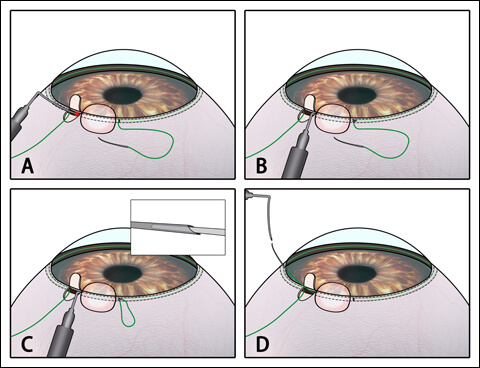Canaloplasty Surgery in the U.S.
Canaloplasty surgery is a modern, minimally invasive glaucoma procedure that restores the eye’s natural drainage system. By opening and dilating Schlemm’s canal, this surgery improves fluid outflow, lowers intraocular pressure (IOP), and helps prevent vision loss without creating a bleb (a fluid pocket under the conjunctiva).
Because it avoids full-thickness penetration into the eye, canaloplasty is considered a safer alternative to trabeculectomy and often results in fewer postoperative complications.
Why Canaloplasty Is Performed
Ophthalmologists may recommend canaloplasty surgery for patients with:
-
Primary open-angle glaucoma requiring significant IOP reduction
-
Poor tolerance or inadequate control with medications and laser therapy
-
A desire for a safer, longer-term solution without traditional filtering surgery risks
This procedure is most commonly used for mild to moderate glaucoma but may also be an option for some patients with advanced disease.
How the Procedure Works
During canaloplasty, a tiny microcatheter is inserted into Schlemm’s canal, circumnavigating 360 degrees around the eye’s drainage system. The canal is gently dilated with viscoelastic gel, and a suture is placed to keep it open, improving long-term aqueous outflow.
Key procedure details:
-
Anesthesia: Local or regional anesthesia is typically used.
-
Duration: The surgery usually takes 45–60 minutes.
-
Hospital Stay: Outpatient procedure; patients go home the same day.
-
Goal: Restore natural drainage and provide long-lasting IOP control without creating a bleb.
Benefits of Canaloplasty
-
Restores Natural Drainage – Maintains the eye’s physiological outflow system.
-
Bleb-Free Surgery – No external bleb reduces risk of infection or leaks.
-
Long-Term IOP Control – Effective for years, sometimes reducing medication use.
-
Lower Risk of Complications – Less chance of hypotony, bleb failure, or severe inflammation.
-
Suitable for Both Eyes – Can be performed sequentially with low complication rates.
Risks and Limitations
While generally safe, canaloplasty surgery does have potential risks, including:
-
Transient hyphema (small blood accumulation in the anterior chamber)
-
Mild inflammation or temporary blurred vision
-
In rare cases, failure to lower pressure sufficiently, requiring additional procedures
Regular follow-up is necessary to monitor IOP and ensure proper healing.
Recovery After Canaloplasty
Recovery is typically faster and more comfortable compared to traditional glaucoma surgery.
Typical recovery expectations:
-
First few days: Mild redness, irritation, and blurred vision; managed with prescribed eye drops.
-
1–4 weeks: Gradual IOP stabilization and reduction of inflammation.
-
Return to normal activities: Usually within 1–2 weeks, depending on the patient’s healing response.
Avoid eye rubbing, strenuous exercise, and contact sports during the early postoperative phase.
Success Rates and Outcomes
Clinical studies show that canaloplasty can lower IOP by 30–40% on average, with many patients experiencing a reduced need for daily medications. Long-term studies indicate stable results for 3–5 years, with fewer complications than trabeculectomy.
Comparison with Other Glaucoma Surgeries
| Procedure | Invasiveness | IOP Reduction | Complication Risk | Bleb Required? |
|---|---|---|---|---|
| Canaloplasty | Minimally Invasive | Moderate-High | Low | No |
| Trabeculectomy | Highly Invasive | Very High | Higher Risk | Yes |
| Tube Shunt Surgery | Invasive | High | Moderate | Yes |
| Laser Treatments | Non-Invasive | Mild-Moderate | Very Low | No |
Canaloplasty is an excellent choice for patients seeking effective, safer pressure reduction without the maintenance required for bleb-based surgeries.
Availability in the Philippines
Canaloplasty surgery is widely performed in the United States and Europe but is less common in the Philippines. Availability may be limited to specialized ophthalmology centers and major hospitals. Patients considering this procedure should consult a glaucoma specialist in Manila, Cebu, or Davao to determine if it is offered locally and whether they are suitable candidates.
Cost of Canaloplasty in the U.S.
The cost of canaloplasty surgery in the U.S. generally ranges from $4,000 to $7,000 per eye, depending on the hospital, surgeon’s expertise, and regional healthcare pricing. Insurance may cover part of the procedure if it is medically necessary.




